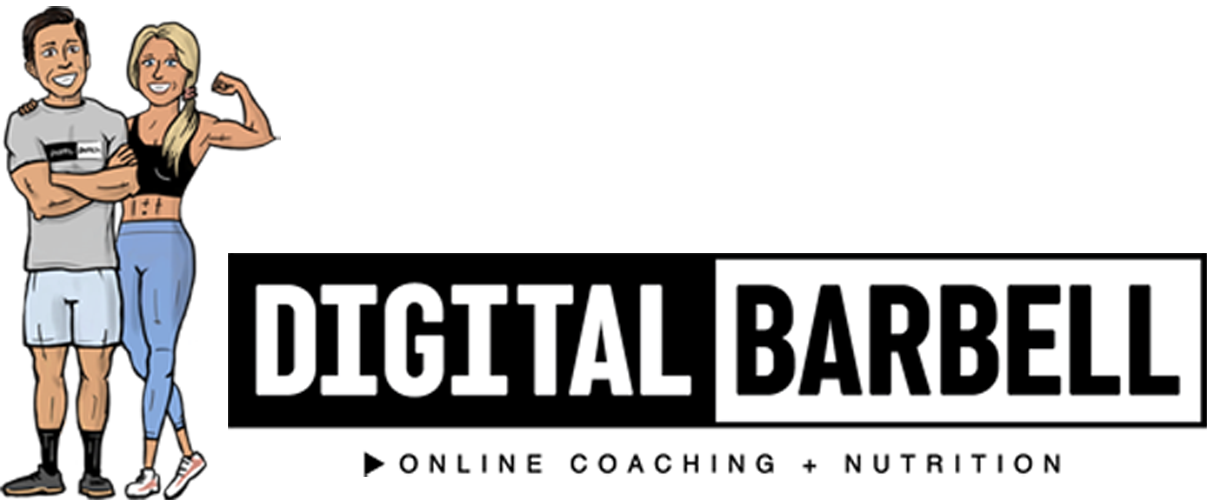The 5 Non-Negotiables of Building Strength
Why Should You Build Your Strength?
Most people start exercising because they want to look better, feel better, or avoid future health problems. But what many don’t realize is that strength—not just “exercise”—is the foundation for all of it.
Think about this:
Muscle burns 2–3x more calories than fat at rest. That means the more muscle you have, the more food you can eat without gaining fat. People who lift weights regularly have 10–15% higher resting metabolic rates than those who don’t—an extra 200–400 calories burned every day without any extra cardio. (That’s like eating an extra snack or two daily without gaining weight)
Starting in your 30s, you naturally lose a percentage of your muscle mass every decade if you’re not strength training. By your 60s, that decline could account for up to 25% muscle loss. That’s why people say, “I just don’t have the energy I used to.”
This isn’t just about looking soft in the mirror. It’s about being strong enough to carry your groceries, climb stairs, get off the floor, and avoid the slow creep toward needing a cane—or worse, a nursing home.
If you’ve ever felt like your metabolism “slowed down” with age, or like you’re weaker now than you were in your 20s… it’s not your imagination. It’s muscle loss and lack of activity. And the way to fight it is strength training.
By the way… We’re Jonathan & Blakley Fletcher. We own and operate Digital Barbell. We’ve been in the fitness business for over a decade, and we’ve been coaching people 100% online since 2018. As of now, we’re living, working, and travelling full-time in our 2023 Airstream.
You can follow along on our YouTube channel, and be sure to subscribe to our podcast on Apple or Spotify for tons of free and valuable fitness content.
Hey! Nice To Meet You!
Jonathan & Blakley
Are You Really Strength Training?
Here’s the trap: a lot of people think they’re doing strength training when they’re really just exercising.
You go to a bootcamp or HIIT class and use dumbbells in the circuit.
You hop on a few machines at the gym and do 3 sets of 10.
You sweat, you’re sore the next day, and you feel like you “worked out.”
But soreness, sweat, and calorie burn don’t automatically equal strength. If you’ve ever thought:
“I’ve been working out for months but I don’t look any different.”
“Why am I still lifting the same weight I started with?”
“I keep getting sore, but I don’t feel stronger.”
That’s a sign you’re exercising, not training.
The Anatomy of Strength Training
Here’s the science in plain English:
Stress: When you challenge a muscle with enough resistance, you create microscopic tears in the fibers.
Recovery: Your body responds by repairing those fibers, making them thicker and stronger. This process is called muscle protein synthesis (MPS)—and it makes your body more sensitive to the protein you eat.
Adaptation: At the same time, your nervous system learns how to coordinate movements better and recruit more motor units inside your muscles. This is why beginners often get stronger quickly even before they “look” more muscular.
This cycle—Stress → Recovery → Adaptation—is the essence of strength training.
But here’s the kicker: if your main goal in the gym is to burn calories, sweat buckets, or hit a certain heart rate… You’re exercising, but you’re not building much, if any strength.
The 5 Non-Negotiables of Building Strength
If you want to actually get stronger, your training needs these five ingredients. Miss one, and progress stalls.
1. Progressive Overload
Muscles only grow if they’re challenged with more over time. If you always lift the same weight for the same reps, your body has no reason to adapt.
There are several ways to apply progressive overload, and the best approach often depends on your training experience:
Linear Progression (perfect for beginners):
Add a small amount of weight each workout or every week. For example, squat 95 lbs on Monday, 100 lbs on Wednesday, and 105 lbs on Friday. This works incredibly well in the beginning because your body adapts quickly. But it doesn’t last forever—eventually, the jumps become too big to sustain.Double Progression (steady and sustainable):
Stick with a weight until you can do the top end of a rep range, then increase the weight and start over at the lower end. Example: Bench press 100 lbs for 3x8. Once you can do 3x12, increase to 105 lbs for 3x8 and build up again.Volume Progression:
Instead of adding weight, add sets or reps. Example: Deadlift 225 lbs for 3 sets of 5. Next week, do 4 sets of 5. Once you’ve added volume, you can increase the load and drop back down to fewer sets.Advanced methods (for later on): Things like tempo changes (slowing the eccentric), pause reps, or more complex periodization schemes can all be tools for progression once you’re past the beginner stage.
👉 The key: No matter which method you use, progression must be intentional and tracked. If you’re just showing up and doing “whatever feels hard today,” chances are you’re not actually progressing—you’re just maintaining.
2. Fundamental Movement Patterns
Your body is designed to squat, hinge, push, and pull. These movements use the most muscle mass through the longest range of motion—making them the biggest bang for your buck.
Squats, deadlifts, presses, and rows build real-world strength that translates to everyday life.
Compare that to burpee-to-bicep-curl combos or jump squats—they’ll leave you breathless, but they won’t add meaningful strength.
If your workouts are filled with “creative” exercises that look cool but don’t let you add weight over time, you’re missing the basics that actually build strength.
3. Planned Structure
Strength isn’t built on random workouts—it’s built on a plan.
Each muscle group needs to be trained about 3x per week in the right rep ranges.
Overdoing the same movement pattern in one session (like squatting five variations) doesn’t mean faster results—it often means burnout.
Smart programs include deloads and rest days to let your body recover and come back stronger.
If you’re bouncing between random YouTube workouts, or every session feels like “muscle confusion,” you’re exercising, not training.
4. The Right Effort
Let’s be honest: a lot of people just “go through the motions.” They pick up a weight, stop when it starts to feel uncomfortable, and call it a set.
Strength is built when you push close to failure—not past it every time, but close enough that your body has to adapt.
Self-ID: If you’re scrolling Instagram during your set, or you could have done 10 more reps, you’re not working at the effort level needed to build strength.
We coach our clients to push to about 1 or 2 reps before failure. That’s where the magic happens.
5. Recovery
This is where most people drop the ball. Muscles don’t grow while you train—they grow while you recover.
Sleep: Aim for 7–9 hours. Sleep debt literally cuts into your muscle-building potential.
Nutrition: You need enough protein (about 0.7–1g per pound of bodyweight) and carbs to fuel your workouts and recovery.
Rest days: If you think grinding 7 days a week will get you results faster, think again. Overtraining just digs you into a hole.
If you’re sore all the time, dragging through workouts, or not seeing progress despite working hard—you’re probably under-recovering.
The Bottom Line
Here’s the bottom line: if you’ve been sweating it out in the gym but not seeing the results you want, you’re not broken—you’re just missing the blueprint.
Strength training is simple but not easy. Stick to the 5 non-negotiables—progressive overload, fundamental lifts, planned structure, the right effort, and recovery—and you’ll finally get the results you’ve been chasing.
Because strength isn’t just about looking good—it’s about moving better, feeling better, and living better for the long haul.
Ready to take this head knowledge and turn it into real results you can see and feel?
Check out our program options below:

